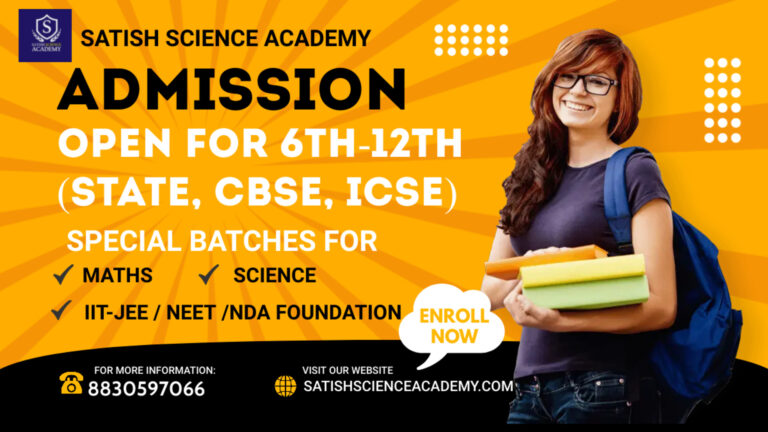Distance Education – A Flexible Pathway to Learning Success
1. Introduction
Definition of Distance Education
Distance education refers to a mode of learning where students are not physically present in a traditional classroom. Instead, instruction is delivered through various communication technologies, allowing learners to study at their own pace and convenience from remote locations.

Brief History and Evolution
. With the advancement of technology, it evolved from radio and televised lessons to internet-based learning. Today, it includes real-time virtual classes, online modules, and interactive platforms, making it an integral part of global education systems.
Importance in Today’s Educational Landscape
In the 21st century, distance education is more than an alternative; it is a mainstream approach that provides inclusive learning opportunities to a broader population. It bridges geographical, economic, and social gaps, ensuring that learners from remote or underprivileged backgrounds have access to quality education.
Relevance Post-COVID and in a Digital Age
. Schools, colleges, and universities worldwide embraced online platforms to ensure uninterrupted learning. Even post-COVID, the digital shift has persisted, emphasizing the long-term value and relevance of distance learning in an increasingly connected world.
2. Types of Distance Education
Correspondence Courses
These are traditional forms of distance education where study materials are mailed to students, and assignments are returned for evaluation. Although less common today, they still exist in regions with limited internet access.
Online Learning (E-learning)
Online learning is the most popular and dynamic form of distance education, utilizing Learning Management Systems (LMS), video lectures, discussion forums, and digital assessments. Platforms like Coursera, edX, and university portals enable students to learn from world-class institutions from any location.
Hybrid or Blended Learning
Blended learning combines traditional face-to-face teaching with online components. This distance education model offers flexibility while maintaining some level of classroom interaction, making it ideal for professional courses and certifications.
MOOCs (Massive Open Online Courses)
MOOCs are large-scale, open-access online courses offered by top universities. These courses support distance education by allowing global participation without admission constraints. Learners gain knowledge, certifications, and sometimes even credits toward degrees.
Satellite/Televised Classes
Televised and satellite-based distance education systems broadcast lessons to students in different areas, especially useful in rural and underdeveloped regions. These are often used by government education programs or national education channels.
Mobile Learning (M-learning)
M-learning is a modern form of distance education using smartphones, tablets, and apps to access study content. With increasing mobile penetration, this format ensures on-the-go learning, making education more accessible and interactive.
3. Benefits of Distance Education
Flexibility and Convenience
Distance education allows learners to choose their own schedules, making it ideal for individuals balancing education with work or family responsibilities. Courses can be accessed at any time, offering unmatched flexibility.
Accessibility from Anywhere
One of the most significant advantages of distance education is that students can learn from anywhere in the world. Whether in rural India or urban America, geographical location is no longer a barrier to receiving quality education.
Cost-Effectiveness
Compared to traditional classroom education, distance education significantly reduces costs related to commuting, accommodation, and infrastructure. Many online courses are free or low-cost, making education more affordable.
Self-Paced Learning
. This personalized learning approach accommodates different learning speeds, reinforcing concepts more effectively than time-bound classroom models.
Variety of Courses and Universities
From diplomas to postgraduate degrees, distance education offers an extensive range of programs across diverse disciplines. Learners can choose from globally recognized institutions and customize their educational journey to align with career goals.
4. Challenges of Distance Education
. Understanding these can help institutions and learners prepare better.
Lack of Face-to-Face Interaction
One major drawback of distance education is the absence of physical classroom interaction. Students may miss out on immediate feedback, real-time discussions, and personal connections with peers and instructors, which are essential for collaborative learning and emotional engagement.
Self-Discipline Required
Unlike traditional learning, distance education demands a high degree of self-motivation and time management. Without regular classroom routines or peer pressure, learners must stay focused and consistent, which can be difficult for some individuals.
Limited Practical Exposure
Courses that require laboratory work, hands-on training, or physical demonstrations often face limitations in a distance education setting. Though virtual simulations exist, they may not fully replicate real-life practical experiences.
Issues with Internet/Connectivity
In many developing regions, internet bandwidth and digital infrastructure remain a challenge. Distance education heavily depends on stable connectivity, and technical issues can disrupt the learning process or exclude students altogether.
Recognition and Credibility of Some Courses
Not all distance education programs are recognized equally. Some courses, especially those from non-accredited platforms, may not hold the same weight as traditional degrees when it comes to employment or higher education opportunities.
5. Popular Distance Education Platforms & Institutions
As distance education continues to grow, a variety of platforms and institutions have gained popularity by offering quality, flexible, and affordable learning experiences.
IGNOU (India)
The Indira Gandhi National Open University (IGNOU) is a pioneer of distance education in India. With over 4 million students enrolled, it offers undergraduate, postgraduate, diploma, and certificate programs recognized globally.

NPTEL and SWAYAM (India)
Both are government-backed initiatives offering high-quality distance education in technical and non-technical subjects. NPTEL, developed by the IITs and IISc, focuses on engineering and science courses. SWAYAM provides a vast range of free online courses from school-level to postgraduate programs, often with certification options.
edX, Coursera, Udemy, Khan Academy
These global platforms have revolutionized distance education by collaborating with top universities and professionals.
- edX and Coursera offer academic-level courses, some with accredited certification and even full degrees.
- Udemy focuses on skill-based courses for personal and professional development.
- Khan Academy provides free learning content primarily for school-level students.
University of Phoenix, Open University (UK)
Institutions like the University of Phoenix in the USA and the Open University in the UK are dedicated entirely to distance education, offering flexible programs that cater to adult learners, working professionals, and international students.
Government-Approved Distance Education Universities
Several Indian universities, such as Annamalai University, Symbiosis Centre for Distance Learning, and Amity University Online, are recognized by UGC-DEB (University Grants Commission – Distance Education Bureau). These universities ensure quality standards in distance education and offer a wide array of disciplines.
6. Distance Education vs Traditional Education
Understanding the comparison between distance education and traditional classroom learning is crucial in choosing the right path based on individual needs and goals.
Key Differences in Learning Style
- Distance education is learner-driven, flexible, and often asynchronous, allowing students to learn at their own pace.
- Traditional education is structured, instructor-led, and involves fixed schedules and in-person attendance.
- Digital tools like video lectures, online quizzes, and virtual discussion boards dominate distance education, while physical classrooms use whiteboards, labs, and real-time activities.
Comparison of Outcomes
While traditional education has long been considered superior in providing comprehensive learning experiences, recent studies show that distance education can offer equal or even better outcomes—especially for self-motivated learners. Success largely depends on the learner’s discipline, the course quality, and technological support.
When to Choose Which
- Choose distance education if you are a working professional, live in a remote location, or need a flexible schedule. It is also ideal for acquiring additional certifications or upskilling without interrupting your current responsibilities.
- Choose traditional education if you prefer structured learning, require practical exposure, or benefit more from direct instructor-student engagement. Programs like medicine, engineering labs, or performing arts may require in-person training.
7. How to Choose a Good Distance Education Program
With a growing number of online courses and institutes, selecting the right distance education program requires careful evaluation. The quality of your learning experience—and the value of your degree—depends on choosing a credible and well-structured course.
Accreditation and Recognition (AICTE, UGC, DEB in India)
Always verify if the distance education program is approved by regulatory authorities. In India, bodies like UGC-DEB (Distance Education Bureau), AICTE, and NAAC accredit recognized universities and ensure academic credibility. International learners should check for regional accreditation and global affiliations.
Curriculum and Faculty
A well-designed distance education curriculum should match the rigor and relevance of traditional courses. Look for programs that offer updated syllabi aligned with industry demands, and be sure the faculty comprises experienced educators and subject matter experts.
Support System (Mentors, Discussion Forums, etc.)
The success of distance education largely depends on the support infrastructure. Ensure the institution offers:
- Dedicated mentors or tutors
- Interactive discussion forums
- Regular doubt-solving sessions
- 24×7 tech and academic support
Alumni Feedback and Placement Support
Before enrolling, read reviews and talk to alumni. Their experiences provide insights into teaching quality, support services, and career impact. A good distance education institution will also offer placement support, internships, and networking opportunities with industry professionals.
Fee Structure and Scholarships
Compare the tuition fees, hidden costs, and payment flexibility. Many reputed distance education universities offer EMI options, financial aid, or scholarships for meritorious and economically challenged students.
8. Career Scope After Distance Education

Contrary to outdated perceptions, distance education is now widely accepted in professional sectors. With the rise of online certifications and remote learning, employers are increasingly valuing skills over mere classroom degrees.
Employment Opportunities
Graduates from accredited distance education programs can apply for jobs in both private and public sectors. Fields like IT, management, finance, digital marketing, and education offer ample opportunities for distance learners equipped with relevant knowledge and skills.
Government Job Eligibility
Many Indian government jobs accept degrees obtained via distance education, provided the institution is recognized by UGC or relevant authorities. From UPSC exams to state-level services and bank recruitments, your distance degree can be a valid passport to government careers.
Higher Education Scope
A degree from a recognized distance education program makes you eligible for higher studies—including master’s, M.Phil, and even Ph.D. programs. Many reputed institutions now accept online or open learning backgrounds, especially when accompanied by good academic records or qualifying exam scores.
Entrepreneurship and Freelance Options
With distance education, many learners explore entrepreneurship or freelancing. Whether it’s launching an online business, offering digital services, or starting a consultancy, the flexibility of distance learning allows individuals to apply their education directly into practice.
9. Distance Learning for Working Professionals
One of the strongest benefits of distance education is its suitability for working professionals. Whether you’re looking to climb the corporate ladder or shift careers entirely, distance learning can align with your professional goals.
Upskilling and Reskilling
With rapidly evolving industries, distance education is a powerful tool for upskilling (learning advanced concepts in your current domain) and reskilling (switching to a new field). From coding bootcamps to data analytics and digital marketing diplomas, there’s a program for every need.
Pursuing Post-Graduate Diplomas and MBAs
Several institutions offer PG Diplomas and MBA programs via distance education, tailored specifically for working executives. These courses often include weekend sessions, live case studies, and recorded lectures, enabling learners to gain managerial and strategic expertise without leaving their jobs.
Managing Work-Life-Learning Balance

Professionals can set their own study schedules, avoid commute time, and access learning materials anytime—even during work breaks or travel. Time management and consistent planning are the keys to success.
10. Future of Distance Education
The future of distance education is bright, transformative, and deeply intertwined with emerging technologies and global collaboration. As the world embraces digital innovation, distance learning is no longer seen as an alternative—it is becoming the mainstream mode of education, redefining how knowledge is delivered, accessed, and applied.
Role of AI, VR, and AR in Learning
Artificial Intelligence (AI), Virtual Reality (VR), and Augmented Reality (AR) are revolutionizing the landscape of distance education by making learning more interactive, adaptive, and immersive.
- AI-powered platforms analyze learner behavior and provide personalized recommendations, automated grading, and real-time feedback, ensuring every student gets a tailored educational experience.
- Virtual Reality (VR) simulates real-world environments, especially beneficial in fields like medicine, architecture, and engineering. Through VR labs, distance learners can perform complex experiments or design simulations without physical infrastructure.
- Augmented Reality (AR) overlays digital content on real-world environments, enhancing concept clarity and engagement, especially in K-12 and vocational training within distance education platforms.
These technologies will continue to enhance student engagement, reduce dropout rates, and bridge the gap between theoretical learning and practical application in distance education.
Growth of Hybrid Models
The future of distance education lies in hybrid or blended learning models, combining the best of online flexibility with occasional in-person interactions.
- Educational institutions are adopting phygital (physical + digital) setups where students can attend lectures online and visit campus for assessments, labs, or workshops.
- This model ensures that while students enjoy the convenience of distance education, they also benefit from peer collaboration and hands-on experience.
Such integrated models offer a more balanced and holistic approach to learning, especially in higher education and professional courses.
Government Initiatives and EdTech Expansion
Governments across the world, including India, are increasingly investing in distance education infrastructure:
- Initiatives like SWAYAM, DIKSHA, and the National Digital University aim to make quality education accessible to all, especially in remote and underprivileged areas.
- Government policies are becoming more inclusive of online degrees and certifications, recognizing their value in the formal education ecosystem.
- The EdTech sector is booming, with startups and companies developing smart learning platforms, AI tutors, and interactive courses that cater to learners of all age groups.
As public-private partnerships grow, the quality, affordability, and reach of distance education will significantly improve.
Globalization of Education

Distance education is no longer limited by geography. With global universities offering online programs, students can now earn degrees from Ivy League institutions or top European schools without leaving their home countries.
- International collaborations are enabling credit transfers, joint certifications, and cross-cultural learning experiences.
- Language localization and adaptive learning systems make it easier for non-English speaking populations to access global content in their native languages.
- Global MOOCs and online universities are creating a universal academic ecosystem where learners, regardless of nationality or economic background, can access top-tier education.
In the coming years, distance education will be the key driver of global academic democratization, empowering millions with knowledge, skills, and confidence.
Final Thoughts
The future of distance education is undeniably promising. With technology evolving at a rapid pace, government support increasing, and global barriers falling, this mode of learning is poised to reshape the entire educational paradigm. Whether you’re a student, professional, or educator, embracing distance education now means staying ahead of the curve and preparing for a future that values knowledge without boundaries.






